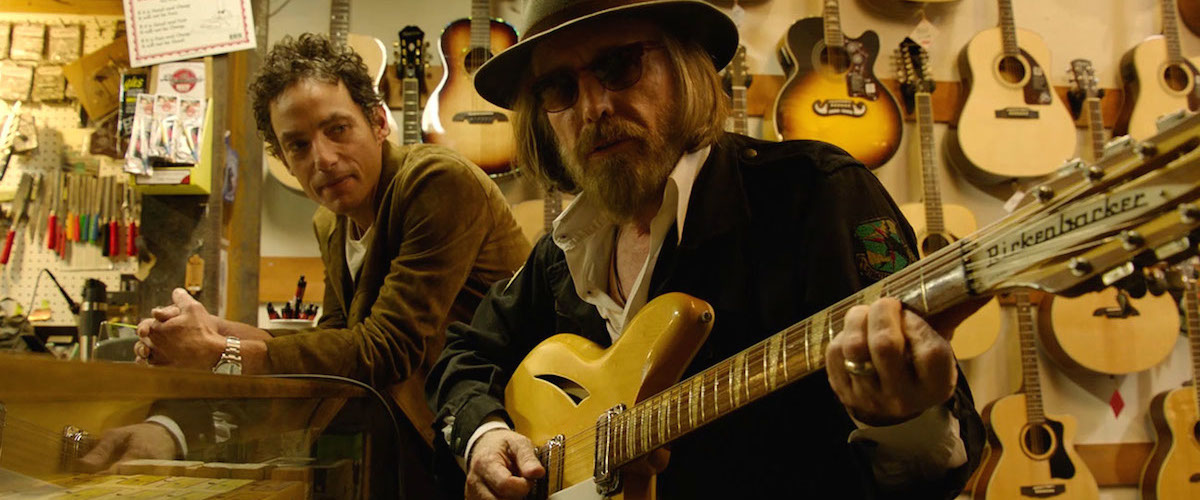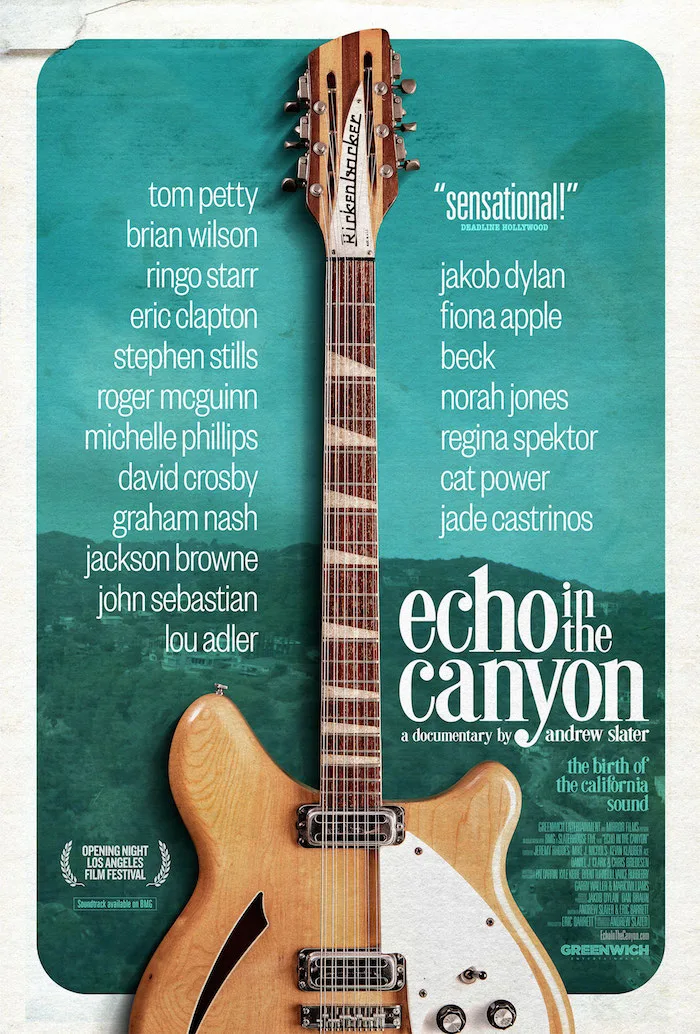At a time when needle drop musicals are proving to be depressingly marketable, thanks to the financial success of critically maligned Oscar-winner “Bohemian Rhapsody,” it seems all a film has to do in order to achieve success is coast on the strength of pre-existing hit songs. Look no further than the soulless “Aladdin” remake for surefire evidence of this trend. At first glance, the new star-studded documentary “Echo in the Canyon” appears all too content in banking on our nostalgia for the formidable roster of artists it has assembled, relying solely on our familiarity with their work to keep our attention rapt. Indeed, it’s difficult to determine whether audiences unfamiliar with the mid-‘60s music scene in Laurel Canyon will view this picture as anything more than a whole lot of gabbing and back-slapping. Having been a child of the ’90s who regularly tuned into Dick Biondi and Nick at Nite, I am far more acquainted with the icons of oldies radio networks—Ringo Starr, Brian Wilson, Crosby, Stills & Nash, among others—who serve as interview subjects in this film than I am with the younger artists led by Jakob Dylan aiming to pay them tribute. Since I wouldn’t know The Wallflowers from any other flower on the wall, I assumed that Dylan was the director of the movie, until I realized during the end credits that it was helmed by Andrew Slater, the same man credited early on as a former president of Capitol Records.
Context is, alas, not a strong suit of this doc. It basically figures that if the names listed on its poster mean nothing to you, why would you be watching anyway? Yet there’s a good chance the uninitiated will find some of their favorite music echoed, in one way or another, through these timeless tunes. Introducing a 2015 concert honoring the work of various southern California legends, Slater claims that The Byrds’ 1965 debut album marked the first time that “a song of poetic depth and grace had become a hit,” thereby effectively giving birth to the Laurel Canyon scene. The particular era celebrated here by Slater and covered by Dylan & Co. took place from ’65 to ’67, when groups of artists were freely influenced by one another while pushing the boundaries for song length and complexity in the same creative environment. “Echo in the Canyon” is a perfect title in how it represents the ways in which the inspiration shared by these bands continues to reverberate through the art form, the industry and cultures not limited to America. I often find it illuminating to study an artwork through the prism of another, noting what defines each artist through the juxtaposition of similar elements. A film like this is catnip for the analytical hemisphere of my brain, as it details precisely how The Beatles led to The Byrds, and then in turn how The Beach Boys’ landmark album, “Pet Sounds,” inspired “Sgt. Pepper.”
It’s fitting that the first, instantly familiar chords we hear in the film are from The Byrds’ rendition of Pete Seeger’s “Turn! Turn! Turn!”, the song that unforgettably opened the pilot of Neal Marlens and Carol Black’s “The Wonder Years,” a ’60s-set series fueled by the sort of youthful memories that continue to haunt and form us throughout the subsequent decades. Slater’s film reminds us of why we turn, turn, turn to songs like these repeatedly in our lives. When we listen to them, we are transported directly back to indelible moments we experienced either through our own eyes or those of a character onscreen. I can never hear The Mamas & The Papas’ “Dedicated to the One I Love” without envisioning Samantha Morton wandering alone through the shadows of a crowded club in the masterful finale of Lynne Ramsay’s “Morvern Callar.” Not only does Slater’s film provide us with a glorious televised close-up of Michelle Phillips singing the opening lyrics of this song, it also gives us an intimate understanding of the circumstances that led to its creation. In conversation with Dylan, Phillips discusses the infidelity that characterized the free love movement, and how her own affair with fellow bandmate Denny Doherty inspired her husband, John, to pen the song unambiguously titled, “Go Where You Want To Go.” This leads to perhaps the most inspired vocal performance of the tribute concert, as Jade channels Phillips’ defiance in refusing to limit the boundaries of her sexuality. Though no mention is made of the long-secret incestuous relationship John allegedly conducted with his daughter, its very existence accentuates the hypocrisy of his righteousness.
The Beatles’ eternal status as the greatest band of all time is further justified here, since their 1964 appearance on “Ed Sullivan” served as the mighty oak from which all the groups in Laurel Canyon sprang like branches. Struck by how The Beatles’ chord changes in “I Wanna Hold Your Hand” were derived from folk music, Roger McGuinn decided to publicly perform his own single-guitar rendition of the number (evocative of the simplest and best cover in Julie Taymor’s “Across the Universe”), which was flatly rejected by audiences in California. Yet it was this approach that resulted in McGuinn and his fellow Byrds being dubbed “America’s response to The Beatles”—shoes they were doomed never to fill—while prompting various musicians, including Dylan’s immortal father, to view their own work in a whole new light. The late Tom Petty, to whom the film is dedicated, approves of his colleagues who were able to walk the line between “cross-pollination” and “outright theft,” such as how The Beatles modeled their song, “If I Needed Someone,” after Seeger’s “The Bells of Rhymney,” or how Eric Clapton’s “Let It Rain” resembles the original version of Buffalo Springfield’s “Questions,” before the latter was altered in response to Judy Collins’ “Since You’ve Asked.” When Dylan assures Clapton that he’ll edit out his admittance that he may have “copped” the Springfield song without realizing it, the musician insists that the revelation be left in the final cut, citing its importance.
Among the many traits perfected by The Beatles was their refusal to outstay their welcome by “turning on the smoke machine and playing the old hits,” as observed dryly by David Crosby. The band broke up just after the ’60s had come to a close, while many of the groups they befriended had made the decision to dissolve, allowing their members to move in separate directions. One of the more puzzling aspects of Slater’s documentary is its inclusion of footage from Jacques Demy’s “Model Shop,” the film singled out by Dylan and his tribute crew as the cultural artifact that inspired their concert, noting that the picture “looked how the era sounded.” Had Slater and co-writer Eric Barrett (producer of “I’m Gonna Git You Sucka”) given us a better idea of what the film was about, perhaps its footage would’ve registered as more poignant. Instead, all we get are shots of Gary Lockwood—cast as a marketable alternative to Harrison Ford (ah, how times a-change)—looking wistfully at the LA skyline, while pursuing Anouk Aimée before ultimately splitting from her. Even stranger is the fact that the only credited music in “Model Shop” is by Spirit, a band not featured in Slater’s film. In terms of illustrating how great an era the ’60s were for music, few cinematic works are as persuasive as Hal Ashby’s 1978 masterpiece, “Coming Home,” where a married woman agrees to sleep with an injured veteran, as Springfield’s “Expecting to Fly” lends an ethereal glow to every frame. It is this song, released at the tail end of ’67 and intended by Neil Young as a warning to his bandmates of his impending exit, that Dylan believes signaled the close of Laurel Canyon’s golden period, causing its musicians to find themselves on their own, much like the three central protagonists in the final sequence of Ashby’s film.
The most valuable lesson to be gleaned from “Echo in the Canyon” is that the ingenious fusion of two elements considered disparate, namely folk and rock or Bach chordal movements and “California Girls,” can lead to a revolution. I wish the film had probed more into Regina Spektor’s provocative argument that the songs released during this period, both in terms of structure and word usage, are more related to dreams than what had come before, suggesting that American musicians were getting in touch with their unconscious mind, which foreshadowed the psychedelia of Woodstock in 1969. This also happens to be the year when Dylan was born, “Model Shop” was released and where Quentin Tarantino’s “Once Upon a Time in Hollywood” is set, underlining the loss of innocence that arrived with the Manson murders. Freedom is also rendered a casualty whenever innocence expires, and it was the liberation of artistic consciousness during this period that caused so many hit songs to be guided by intuition. Buffalo Springfield’s resistance to performing “faster” in the recording studio is certainly shared by David Lynch, who shot down any onset request to move “Twin Peaks: The Return” at a quicker pace. What is art if not a dream we enter to make sense of our waking life? Who would want to rush that?




















